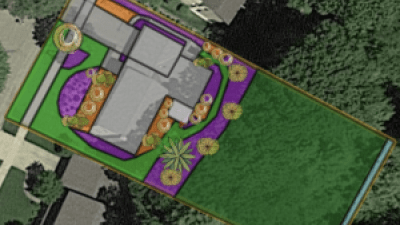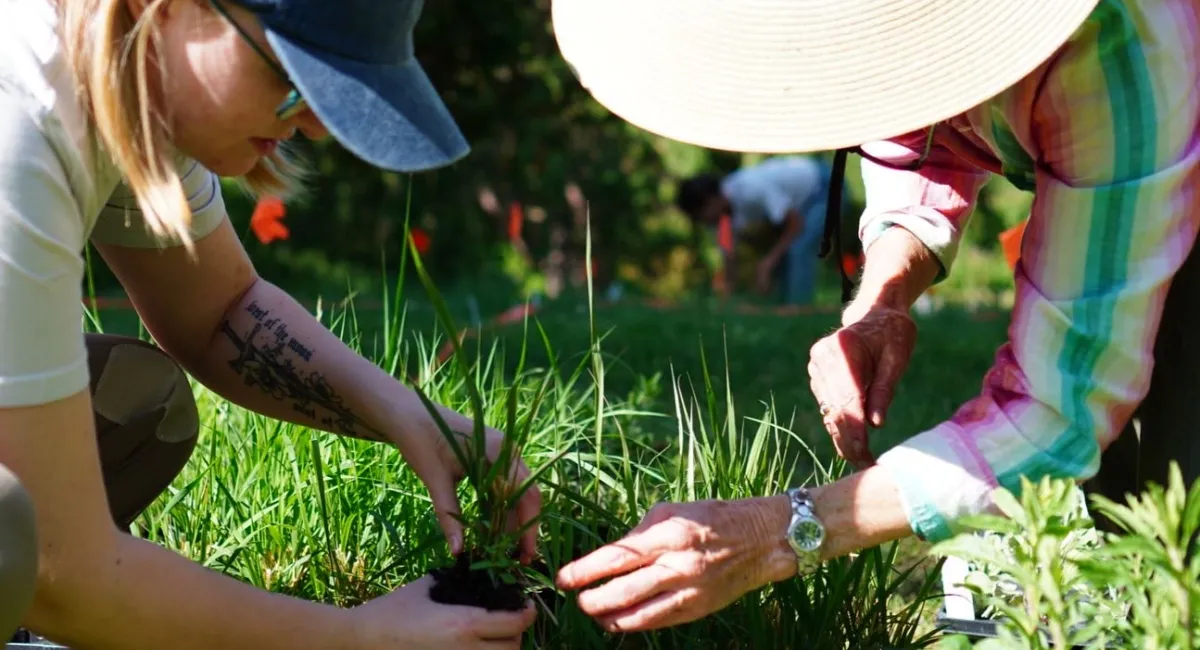What is Habitat?
Habitat is the food, water, shelter and nesting sites that living things depend on year-round. Because habitat comes in many forms, it is important to think in terms of natural communities, the predictable groups of plants and animals that have coevolved in particular physical environments. Recreating these natural communities (aka habitat) invites the biodiversity we aim to support.
Where can we create habitat?
Functional habitat can be improved or created just about anywhere in the urban and suburban landscape. Here are some common places that are often overlooked:
Lawns:
Reducing and replacing lawn with native plants is one of the highest impact actions one can take to add ecological value to a landscape.
Determine lawn use. Keep lawn where it is useful for gathering, playing, and walking; convert the rest to native habitat.
Add habitat where it’s tough to mow or grow lawn. Ditches, corners, slopes, wet spots, and shady, rooty places under trees are prime areas for habitat. Plant native plants that will thrive in those conditions instead of amending and fertilizing soil to grow non-native grass mixes.

Potential planting sites of a suburban lawn highlighted in purple and orange. Reserved lawn spaces in green.
Under Trees
Native trees (oaks, maples, birches, etc.) support an incredible diversity of insects, which in turn are protein and fat-rich morsels for birds and other animals further up the food-chain.
Leave fallen leaves where possible. To complete their life cycles, many insects spend a winter nestled in fallen leaves, soil, or plant debris. Raking and mowing underneath shrubs and trees disrupts this cycle.
Add canopy layers. Plant woodland ground cover (like goldenrods and fall asters) or small trees or shrubs to provide additional food and shelter.
Avoid injury to tree bases from lawn mowers and weed whackers and allow some of the tree’s nutrients to be recycled in place.
Corridors
Creating more and more areas of habitat across our neighborhoods enables pollinating insects, birds and other wildlife to move through our landscape and be able to survive and thrive. Strive to connect habitat with what's already nearby: parks, natural areas, or neighboring yards.
Determining Site Conditions
Plants have evolved to tolerate different site conditions. For example, rich wet meadow plants will shrink and wither when planted in dry sand or thin soiled outcrop sites. The unusual and colorful plants that thrive in those drier sites will rot and die in a wet meadow because it’s too moist and fertile. Understanding site conditions leads to better plant selection. There are plenty of native plants that will grow in exactly the conditions you have.
Examine the Soil
How much moisture the soil holds impacts how much water and nutrients plants can absorb. Different plants have evolved to thrive in different soils.
Dry: Does the soil dry out quickly during summer dry periods? Is frequent watering needed? These are dry soils: sandy and well-drained, or dried out hard clay.
Moist/wet: Does water puddle on top of the soil during the spring or heavy rain periods? These are moist to wet soils with more clay and poorly drained.
Medium: Is the soil somewhere in the middle? Medium soils, known as loam, rarely need watering in dry periods and seldom puddle during heavy rain.
To test the moisture retention of the soil, of the soil, dig a hole 6-8 inches deep at the planting site and take a look at the bare soil revealed. If the soil has a gritty texture it is likely sand or coarser till, which means quick draining conditions after rain unless there’s an impermeable layer just below it. If the soil, when dry, is brick-like and has a fine floury texture or, when damp, can be squeezed into a firm clump, it likely contains a lot of clay or silt. These tend to create wet conditions. Ironically they can be very dry during a drought!
Here’s a fun YouTube video showing a quick and dirty hands-on soil texture test.
Track the Light
Light can change dramatically over the course of a day, through the seasons, and across a site
Sunny (like an open meadow): about 6 or more hours of sun per day
Part Shade (like a forest edge): about 4 hours of sun per day
Full Shade (like a deep forest): less than 4 hours of sun per day. A limited number of flowering plants grow in these conditions in Vermont. Spring ephemerals and early fall blooms will emerge when the tree canopy is thinner at the beginning and end of a growing season.
To measure sunlight, keep a written record, take photos throughout the day and season or use a sun-tracking app to monitor how light at a site changes over time.

